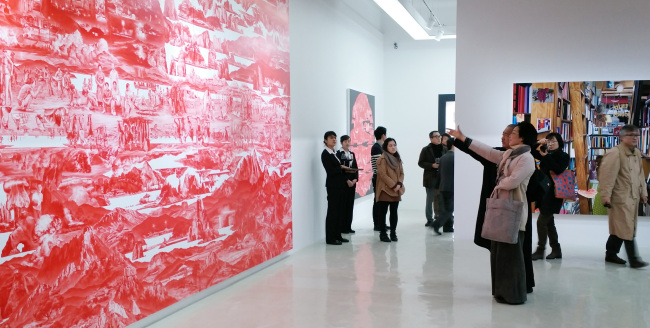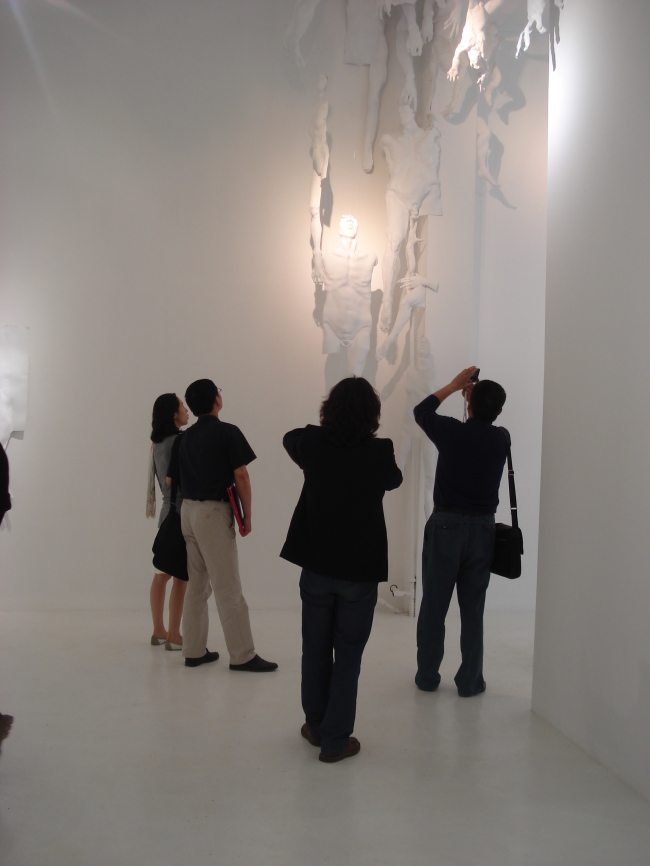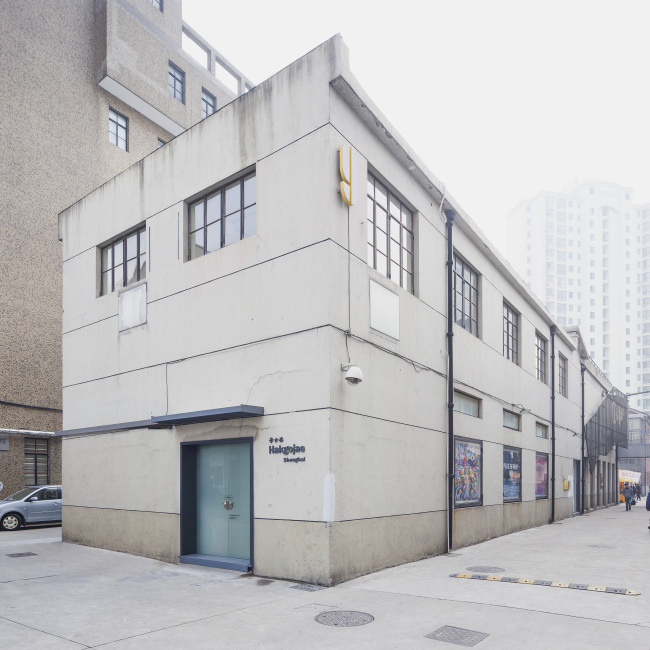
It was ahead of the 2008 Beijing Olympics when the Korean galleries’ ambitions for entering the Chinese art market were at their highest. From 2005, major Korean galleries flocked to China in search of big spenders and potential buyers in the booming art market.
The reality was different. Galleries struggled to make ends meet with skyrocketing rent, complex shipping processes and different art-market dynamics.
Now Pyo Gallery 798 remains the sole Korean gallery in Beijing, once a hopeful place for some of the top galleries such as Gallery Hyundai, Arario Gallery and Artside Gallery.
The reality was different. Galleries struggled to make ends meet with skyrocketing rent, complex shipping processes and different art-market dynamics.
Now Pyo Gallery 798 remains the sole Korean gallery in Beijing, once a hopeful place for some of the top galleries such as Gallery Hyundai, Arario Gallery and Artside Gallery.

“It’s harder to enter the Chinese art market than expected. Launching a gallery requires a lot of preparation because it is about doing business in a different culture,” said Kim Yu-rim, director of Pyo Gallery 798, located in the 798 art district of Beijing. The gallery opened in 2008.
There were many challenges ahead of the Korean galleries. Getting through customs took so long that paintings were held at customs for weeks. Tax imposed on gallery profits exceeded 30 percent. Rent and prices skyrocketed.
“Many gallery owners thought running a gallery in China would cost less. It turned out to be a difficult task. We struggled with running the first Pyo gallery space in Beijing for six years. Rent was usually the same or higher than in Seoul. Customs laws were so complicated and taxes were heavy,” Kim explained. Pyo Gallery closed its first gallery space in Beijing in 2011.
Things were not much different for other foreign galleries.
“It’s very common to see galleries close a year after opening in the art district of 798. Many foreign galleries were in the same position as Korean galleries were. And most of them expected to meet big spenders, but they are really hard to get,” Kim added.
The 798 Art Zone is an industrial complex-turned-gallery neighborhood with more than 300 contemporary art galleries.
“But the Chinese market is still regarded as a new opportunity because here we can meet new customers. In Korea, there are very few. Now we see novice collectors and new buyers rising in China,” said Kim.
China accounts for 33.7 percent of global art sales as a leading market along with the U.S. with an equal share, according to the 2012/2013 Contemporary Art Market Report by Artprice. It also represents 90 percent of sales in the Asian art market.
In five years since its opening, Pyo Gallery 798 has included some young buyers in their mid-30s on its client list. The Korean artists it represents ― Lee Seung-koo and Kim Jun-sik ― are now expanding their presence in the Chinese art scene.
There were many challenges ahead of the Korean galleries. Getting through customs took so long that paintings were held at customs for weeks. Tax imposed on gallery profits exceeded 30 percent. Rent and prices skyrocketed.
“Many gallery owners thought running a gallery in China would cost less. It turned out to be a difficult task. We struggled with running the first Pyo gallery space in Beijing for six years. Rent was usually the same or higher than in Seoul. Customs laws were so complicated and taxes were heavy,” Kim explained. Pyo Gallery closed its first gallery space in Beijing in 2011.
Things were not much different for other foreign galleries.
“It’s very common to see galleries close a year after opening in the art district of 798. Many foreign galleries were in the same position as Korean galleries were. And most of them expected to meet big spenders, but they are really hard to get,” Kim added.
The 798 Art Zone is an industrial complex-turned-gallery neighborhood with more than 300 contemporary art galleries.
“But the Chinese market is still regarded as a new opportunity because here we can meet new customers. In Korea, there are very few. Now we see novice collectors and new buyers rising in China,” said Kim.
China accounts for 33.7 percent of global art sales as a leading market along with the U.S. with an equal share, according to the 2012/2013 Contemporary Art Market Report by Artprice. It also represents 90 percent of sales in the Asian art market.
In five years since its opening, Pyo Gallery 798 has included some young buyers in their mid-30s on its client list. The Korean artists it represents ― Lee Seung-koo and Kim Jun-sik ― are now expanding their presence in the Chinese art scene.

Shanghai is emerging as another strong market for contemporary art sales in China after Beijing, which has served as the epicenter of the Chinese art market, according to Artprice.
On Dec. 20, Korean gallery Hakgojae made its foray into the thriving contemporary art district 50 Moganshan Road in Shanghai. The gallery opened its space in Samcheong-dong, Seoul, in 1988.
“The art market has a tendency to move to the center of the global economy. Shanghai is the new economic center, with burgeoning art markets and rich tradition and heritage,” said Woo Chan-gyu, director of Hakgojae Gallery based in Seoul.
Shanghai hosts 488 galleries and art management companies that bring in 5.1 billion yuan ($840 million) annually, according to a 2013 art market analysis on Shanghai. The city also offers tax breaks and incentives in its economic free zone.
Arario Gallery, another prominent Korean gallery, which closed its Beijing branch in 2012, also said it is looking for “good places” for its next gallery space opening.
“I believe Shanghai will have the most powerful art market and be the driving force of the art trend,” Woo of Hakgojae noted.
By Lee Woo-young (wylee@heraldcorp.com)
On Dec. 20, Korean gallery Hakgojae made its foray into the thriving contemporary art district 50 Moganshan Road in Shanghai. The gallery opened its space in Samcheong-dong, Seoul, in 1988.
“The art market has a tendency to move to the center of the global economy. Shanghai is the new economic center, with burgeoning art markets and rich tradition and heritage,” said Woo Chan-gyu, director of Hakgojae Gallery based in Seoul.
Shanghai hosts 488 galleries and art management companies that bring in 5.1 billion yuan ($840 million) annually, according to a 2013 art market analysis on Shanghai. The city also offers tax breaks and incentives in its economic free zone.
Arario Gallery, another prominent Korean gallery, which closed its Beijing branch in 2012, also said it is looking for “good places” for its next gallery space opening.
“I believe Shanghai will have the most powerful art market and be the driving force of the art trend,” Woo of Hakgojae noted.
By Lee Woo-young (wylee@heraldcorp.com)




![[Herald Interview] 'Amid aging population, Korea to invite more young professionals from overseas'](http://res.heraldm.com/phpwas/restmb_idxmake.php?idx=644&simg=/content/image/2024/04/24/20240424050844_0.jpg&u=20240424200058)






![[Hello India] Hyundai Motor vows to boost 'clean mobility' in India](http://res.heraldm.com/phpwas/restmb_idxmake.php?idx=644&simg=/content/image/2024/04/25/20240425050672_0.jpg&u=)







